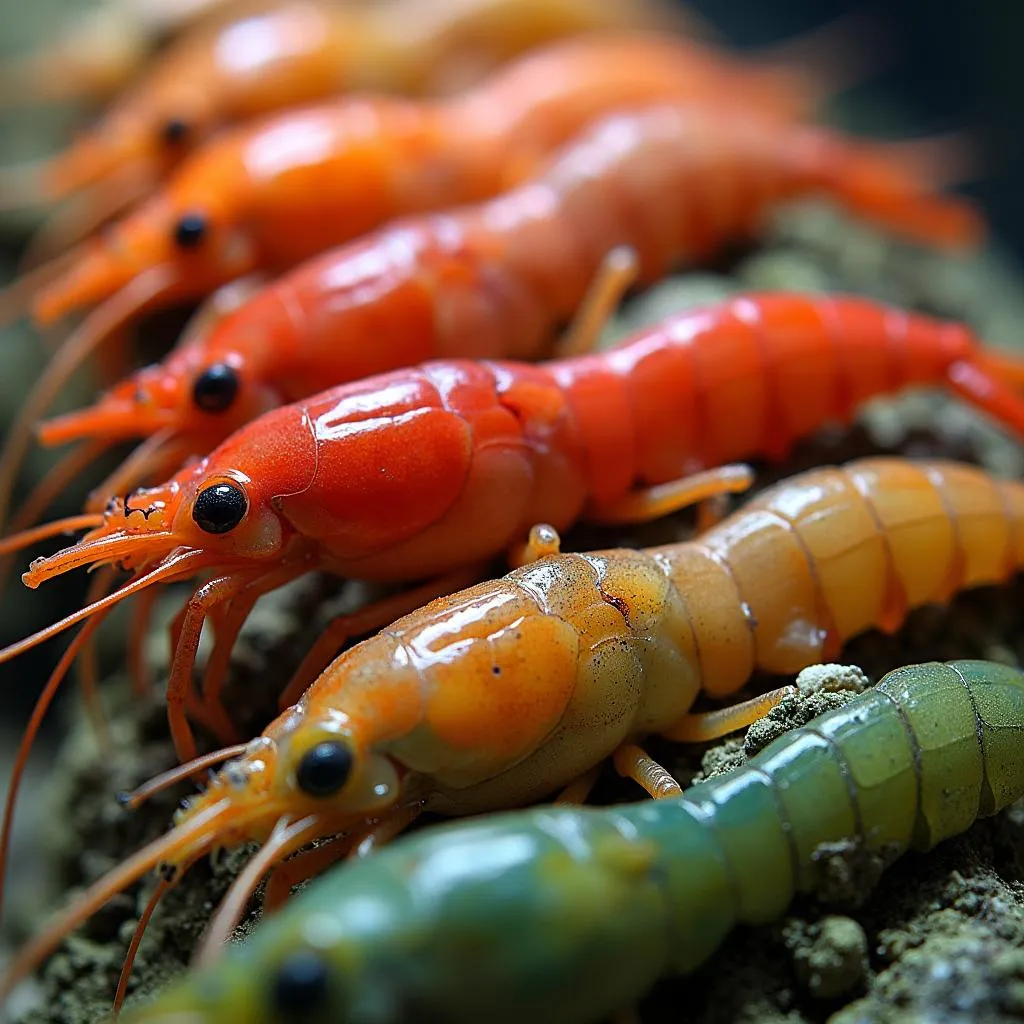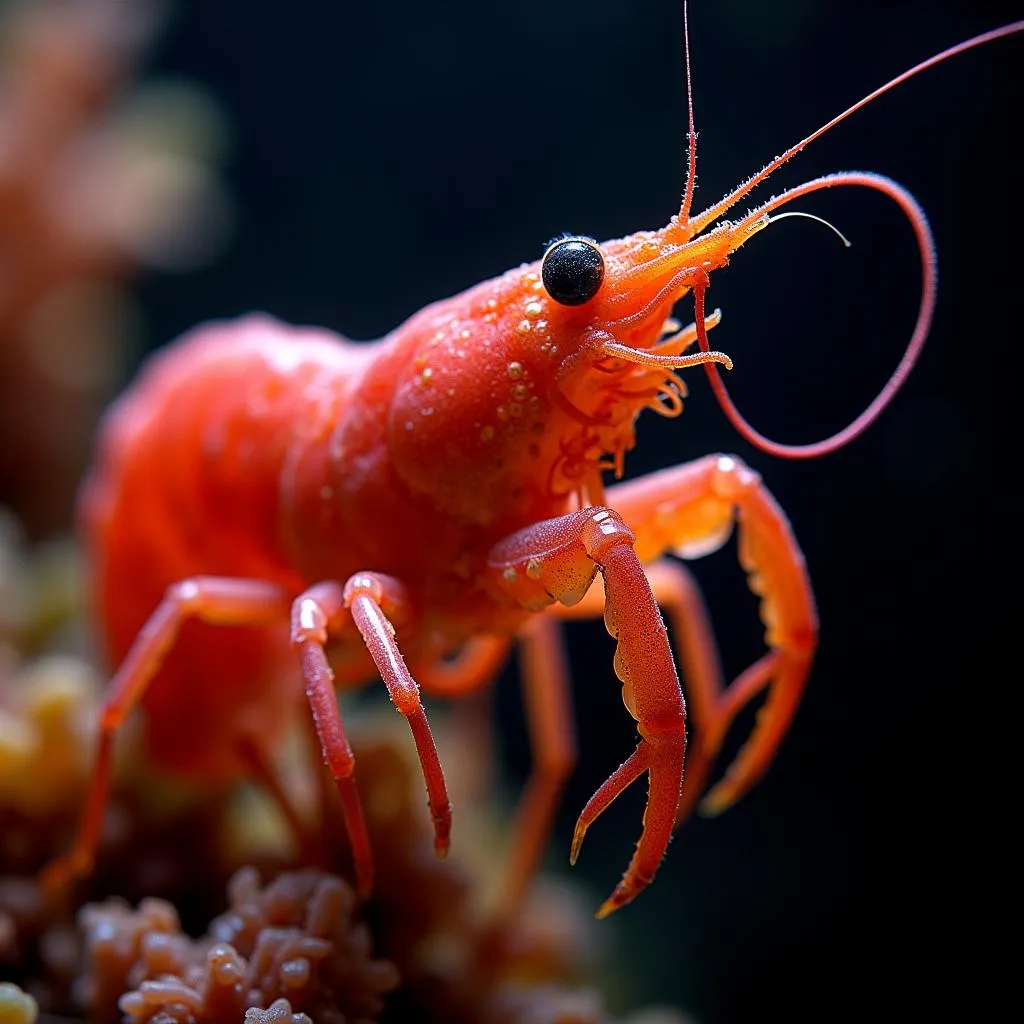Shrimp, those delightful denizens of the deep, often grace our plates with their delicate flavor and versatility. But have you ever wondered about the color of shrimp? While we often associate them with shades of pink and white, the truth is far more colorful and fascinating.
Shrimp, in their natural habitat, display a surprising array of colors, from vibrant reds and yellows to subtle greens and blues. The color of a shrimp is not merely a matter of aesthetics; it plays a crucial role in their survival, communication, and even their culinary appeal.
The Science of Shrimp Color
The secret to a shrimp’s colorful appearance lies in pigments called carotenoids. These naturally occurring pigments are responsible for the vibrant hues we see in many fruits and vegetables, and shrimp have a knack for accumulating them in their shells.
Carotenoids come in various forms, each absorbing and reflecting different wavelengths of light, resulting in different colors. Astaxanthin, for instance, is a powerful carotenoid that gives cooked shrimp their characteristic pink hue.
 Shrimp Color Variations
Shrimp Color Variations
From Ocean to Plate: How Cooking Changes Shrimp Color
You might have noticed that raw shrimp often appear grayish-green or translucent. This is because the carotenoids in their shells are bound to proteins, masking their true colors. However, when heat is applied, these proteins denature, releasing the carotenoids and revealing their vibrant hues.
The most dramatic transformation occurs with astaxanthin. In its natural state, astaxanthin is bound to a protein called crustacyanin, which gives raw shrimp their dull appearance. However, when exposed to heat, crustacyanin breaks down, freeing the astaxanthin to absorb and reflect light, resulting in the familiar pink color we associate with cooked shrimp.
Why Do Flamingos and Shrimp Share a Similar Color Palette?
This question might seem odd at first, but the answer lies in their shared diet. Both flamingos and shrimp consume algae and small crustaceans rich in carotenoids, particularly astaxanthin. As these creatures ingest their carotenoid-rich meals, the pigments accumulate in their feathers and shells, respectively, giving them their vibrant colors.
If you’re curious about how flamingos lose their color, you can explore our article on why do flamingos lose their color.
Beyond Pink: Exploring the Spectrum of Shrimp Colors
While pink might be the most recognizable color, shrimp come in a stunning array of hues, depending on their species, diet, and habitat.
- Brown and Green Shrimp: These shrimp are often found in shallower waters with sandy or muddy bottoms. Their coloration helps them camouflage with their surroundings, providing protection from predators.
- Red and Orange Shrimp: Deeper water shrimp often display vibrant reds and oranges. These colors are thought to play a role in communication and mate attraction in the ocean depths where light is limited.
- Blue Shrimp: Some shrimp species, like the Royal Blue Shrimp, boast stunning blue hues. These colors are often a result of selective breeding and are highly prized in the aquarium trade.
 Deep Sea Shrimp
Deep Sea Shrimp
Do Black Bettas Change Color?
Just as shrimp display fascinating color variations, other aquatic creatures like Betta fish, also known as Siamese fighting fish, are renowned for their vibrant colors and patterns. Black Bettas, in particular, are often sought after for their striking appearance.
If you’re intrigued by the color-changing abilities of these aquatic wonders, you can delve into the fascinating world of Betta fish coloration in our article do black bettas change color.
What Color Should Salmon Be?
Speaking of seafood and color, salmon is another aquatic delicacy that often sparks curiosity regarding its ideal hue. From pale pink to deep red, the color of salmon can vary significantly, influencing our perception of its quality and flavor.
To uncover the factors that influence salmon’s color and what to look for when selecting this popular fish, head over to our insightful article on what color should salmon be.
Conclusion
From the depths of the ocean to our dinner plates, the color of shrimp is a testament to the wonders of nature. Their ability to transform from dull grays and greens to vibrant pinks and reds never ceases to amaze.
So, the next time you savor a plate of succulent shrimp, take a moment to appreciate the fascinating science and natural artistry behind their captivating colors.

